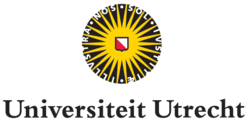
Utrecht Center for Quantitative Immunology

|
Jose A. M. BorghansLaboratory Translational ImmunologyUniversity Medical Center Utrecht Utrecht University |
A second line of research addresses the role of cytotoxic T-lymphocyte responses and human leukocyte antigen (HLA) molecules in HIV-disease progression. Some HLA types have been associated with delayed HIV-disease progression, while others are clearly associated with rapid progression. We investigate two alternative hypotheses that could explain these associations. The first hypothesis is that common HLA types are no longer protective because HIV has evolved to escape presentation by these HLA molecules. The second hypothesis states that protective HLA molecules present epitopes from constrained HIV-1 regions for which escape mutations reduce the fitness of the virus. In line with the latter hypothesis, our bio-informatic analyses have pointed out that certain HLA molecules provide better protection to HIV disease progression than others because of intrinsic differences in their tendency to bind peptides from the HIV-p24 protein.
Five key publications
- Closing the gap between T-cell life span estimates from stable isotope-labeling studies in mice and humans. Westera L, Drylewicz J, den Braber I, Mugwagwa T, van der Maas I, Kwast L, Volman T, van de Weg-Schrijver EH, Bartha I, Spierenburg G, Gaiser K, Ackermans MT, Asquith B, de Boer RJ, Tesselaar K, Borghans JA. Blood. 2013 Sep 26;122(13):2205-12. doi: 10.1182/blood-2013-03-488411.
- Maintenance of peripheral naive T cells is sustained by thymus output in mice but not humans. den Braber I, Mugwagwa T, Vrisekoop N, Westera L, Mögling R, de Boer AB, Willems N, Schrijver EH, Spierenburg G, Gaiser K, Mul E, Otto SA, Ruiter AF, Ackermans MT, Miedema F, Borghans JA, de Boer RJ, Tesselaar K. Immunity. 2012 Feb 24;36(2):288-97. doi: 10.1016/j.immuni.2012.02.006.
- Long-term restoration of the human T-cell compartment after thymectomy during infancy: a role for thymic regeneration? van Gent R, Schadenberg AW, Otto SA, Nievelstein RA, Sieswerda GT, Haas F, Miedema F, Tesselaar K, Jansen NJ, Borghans JA. Blood. 2011 Jul 21;118(3):627-34. doi: 10.1182/blood-2011-03-341396.
- Sparse production but preferential incorporation of recently produced naive T cells in the human peripheral pool. Vrisekoop N, den Braber I, de Boer AB, Ruiter AF, Ackermans MT, van der Crabben SN, Schrijver EH, Spierenburg G, Sauerwein HP, Hazenberg MD, de Boer RJ, Miedema F, Borghans JA, Tesselaar K. Proc Natl Acad Sci U S A. 2008 Apr 22;105(16):6115-20. doi: 10.1073/pnas.0709713105.
- Quantification of T-cell dynamics: from telomeres to DNA labeling. Borghans JA, de Boer RJ. Immunol Rev. 2007 Apr;216:35-47.
Home pages
In UMCU and in TBBMembers
Jose BorghansRob de Boer
Julia Drylewicz
Can Kesmir
Aridaman Pandit
Leila Perie
Kiki Tesselaar
Johannes Textor
Nienke Vrisekoop
Research
Epitope identificationLymphocyte dynamics
Lymphocyte migration
Relevance
More
UCQI homePhD students
Open positions/projects
Agenda
Publications (pubmed)


